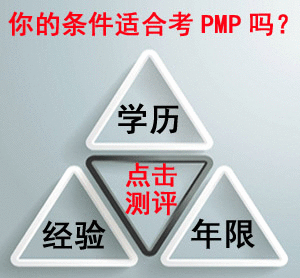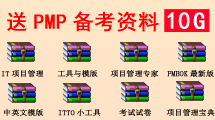PMP考試題及參考答案(34)
|
1 The following types of costs are relevant to making a financial decision except: A opportunity costs B direct costs C sunk cost D unavoidable costs E None of the above ans:C 2 Which of the following types of cost are relevant to making financial decisions: A sunk cost B opportunity cost C material cost D A and C only E B and C only ans:E 3 In which of the following cost estimating techniques are statistics models used: A nonparametric cost estimating B parametric cost estimating C life cycle cost estimating D bottom-up estimating E All of the above. ans:B 4 Under the terms of 2/10 net 30, the buyer may: A deduct 10% of the invoice amount for payment within 30 days B deduct 2% of the invoice for payment within 10 days C incurs a penalty on 10% for payments more than 30 days late D settle the invoice with 2 equal payments; one within 10 days and the other within 30 days E None of the above ans:B 5 Which of the following is referred to as payback period: A the number of periods required to recover the initial investment B the rate of return on the investment C the number of periods required to bring project cost back to the original budget, based on current performance D loan payment schedule E None of the above ans:A 6 Which of the following is referred to as sunk cost: A management reserve B contingency fund C cost budgeted for construction under water D expended funds over which there is no further control E forecasted budget over-runs ans:D 7 The future value of an annual income flow of $1000 for 2 years at 10% is: A $2,200 B $2,280 C $2,300 D $2,310 E None of the above ans:D 8 The net present value of $110 one year from now at 10% is: A $100 B $120 C $121 D $100 less taxes E $100 less taxes and interest ans:A 9 Which of the following depreciation methods provides for accelerated depreciation of an asset: A Double declining balance. B Straight line. C Exponential depreciation D Double sum of the years digits E Double increasing balance ans:A 10 Which of the following is considered a direct cost for producing a widget? A The cost of the materials used to produce a widget. B The labor costs of the workers who actually produced the widget. C The rent for the building in which the widget was manufactured D The salary of senior management and the project sponsor E A and B only ans:E 11 The reason that cost management is so difficult in project management is that: A Projects by definition and nature are non-recurring events and are therefore difficult to predict. B There are no tools for identifying project tasks. C Project managers do not care about tracking costs, as only schedules are important to all project managers. D A and B only E B and C only ans:A 12 Upon completion of 75% of the project, the original schedules and cost estimates that were submitted at the inception of the project are referred to as the: A Baseline costs B Budgeted costs. C Estimates upon completion costs D Scheduled costs E None of the above ans:A 13 The difference between the BCWS and the BCWP is referred to as the: A Schedule variance B Cost variance. C Estimate of completion D Actual cost of the work performed E None of the above ans:A 14 When a project manager is running over the budgeted costs, the project manager can typically _____ to attempt to get the project back on budget. A Reduce features and/or functionality B Increase risk. C Incur a schedule slippage (to obtain more favorable pricing due to lengthened delivery times) D All of the above. E A and B only ans:D 15 Typically, during which phase in a project life cycle are most of the project expenses incurred. A Concept phase B Development of design phase C Execution phase. D Termination phase. E None of the above ans:C 16 What tool have project managers come to use to identify all of the costs associated with a project. A A bill of materials B A Gantt chart C An arrow diagram network. D A work breakdown structure. E B and C only. ans:D 17 You must produce 27 widgets. You can only produce 9 widgets per production run. Each production line setup costs $1000. Each widget consumes $10 worth of material and $5 worth of labor. What is total variable cost for producing one widget. A $1,020 B $1,010 C $1,015 D $20 E None of the above ans:E 18 You must produce 27 widgets. You can only produce 9 widgets per production run. Each production line setup costs $1000. Each widget consumes $10 worth of material and $5 worth of labor. What is the total fixed cost for producing the widgets. A $3,000 B $27,000 C $27,270 D $1,335 E $1,000 ans:E 19 In a contract, the point of total assumption refers to the point where: A The customer incurs the total financial responsibility for each additional dollar spent. B The contractor incurs the total financial responsiblity for each dollar spent. C The schedule and cost variance are zero. D The customer will incur no further costs for the work the contractor performs in the completion of the contract. E B and D only. ans:E 20 The salvage value of an asset is: A The value of the scrap metal if a new asset were taken to a scrap yard. B The value that an asset has on the books after one year of depreciation. C The costs that have been sunk into the project to date. D The expected cash value at the end of an assets useful life. E A and D only. ans:D |




